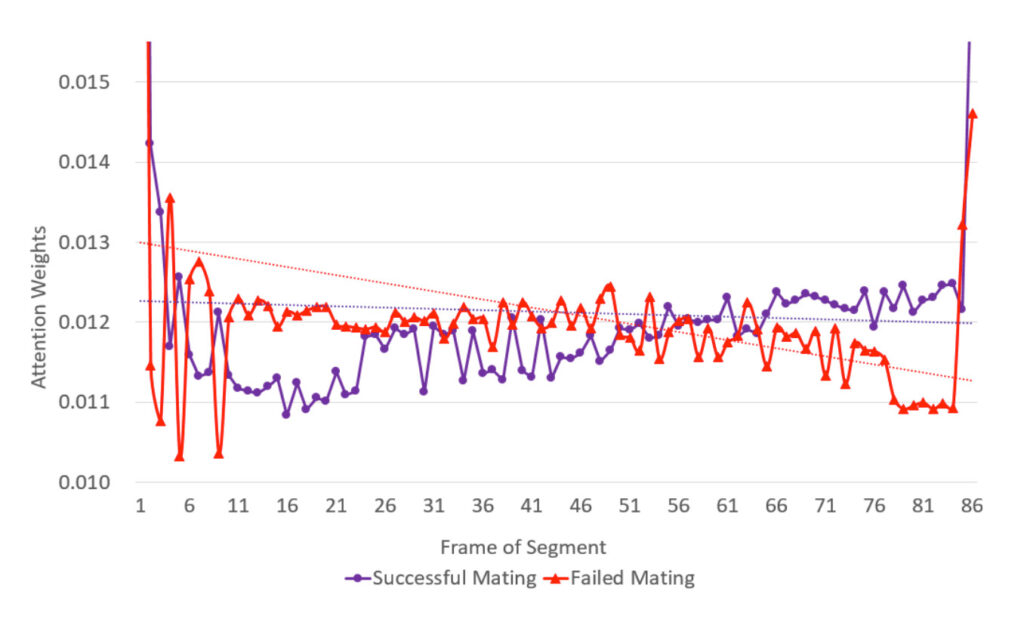Command Palette
Search for a command to run...
Use Neural Networks to Help Round People Find Partners!

A team of scientists in China has used artificial intelligence to intervene in the problem of panda pairing and reproduction. Starting from the vocal characteristics of giant pandas, they analyzed the characteristics of the calls of giant pandas that are about to enter the mating period. Through the algorithm model, they can automatically predict the success rate of giant panda pairing, providing assistance to zoologists' research.
According to the latest statistics, as of November 2019, there were 600 captive giant pandas in the world and only 1,864 giant pandas in the wild.
Giant pandas were once endangered due to their low fertility and survival rates, but through protection and treatment in recent years, they have been moved from the endangered list to the vulnerable list.
In the wild, female giant pandas go into estrus once a year after reaching adulthood at the age of four, and each time lasts only two to three days. However, since giant pandas in captivity have been out of the wild environment for a long time, their natural estrus rate is low, not to mention finding a suitable male panda to mate with in just a few days.
Zoos and breeding centers all hope to increase the fertility and reproduction rate of giant pandas through better artificial breeding methods.

Recently, researchers from Sichuan University, Sichuan Key Laboratory of Endangered Wildlife Conservation Biology, and Sichuan Academy of Giant Panda Sciences published a paper titled "Automatic Prediction of Giant Panda Pairing Success Based on Audio", which brought new ideas to solve this problem.
Determining the estrus status of giant pandas through sound
According to previous data, giant pandas have special vocal behaviors during the breeding season, and these sounds contain some important information, such as the individual's estrus status, the degree of affection for a certain member of the opposite sex, etc. This information will determine the success or failure of mating and reproduction.

This study attempted for the first time an AI method based on giant panda sounds, using a model to automatically predict the giant panda's mating success rate.
The study used speech emotion recognition (SER) technology and a deep neural network to learn the unique vocal characteristics of pandas, define and judge the types of vocalizations, and then combine previous data to automatically predict the chances of successful mating between two pandas.

The specific method is: given an audio sequence of giant panda mating recorded during the breeding process, the researchers first cut out small segments of the giant panda's sounds and then normalized their size and length.
Next, the acoustic features extracted from the audio clip are input into a deep neural network, and the trained model will predict whether the match is successful or failed.
By comparing the results, we can determine the probability of successful mating between two pandas.
Using algorithms to improve panda fertility
After obtaining the prediction results of the algorithm model, giant panda breeders can take appropriate follow-up actions to improve the overall fertility rate, which brings powerful data dimension help to intelligent giant panda breeding.

The researchers evaluated this method on data sets from the past nine years and obtained results that were consistent with the actual situation. At the same time, they proved that the automatic mating success prediction method based on audio has great potential in assisting giant panda reproduction.
The follow-up of the research will continue to expand the content of panda sound data to further verify the practical effectiveness of this method.
In addition, the research team plans to expand the dimensions of the method, including exploring more fine-grained data information in sound and vision.
Giant pandas: Improving China's popularity
As early as 1957, China presented the giant pandas "Ping Ping" and "Zhi Zhi" to the government and people of the former Soviet Union as a "state gift", which opened the precedent for giant panda diplomacy.
In 1972, then-US President Nixon visited China, initiating direct dialogue between the two countries. Shortly after Nixon returned to the United States, China presented a pair of pandas to the United States as a gift.
The Washington Post was unprecedented at the time in using a series of onomatopeia as the headline for its report - "Awwwwwwww, They're Cute. Awwwww, they're cute!"

As of 2018, China has established long-term cooperative research relationships with 14 zoos in 12 countries around the world on giant pandas, with a total of 40 Chinese giant pandas living overseas. The cute giant pandas have become the world's cutest animals and China's "Ambassador of Goodwill."
Compared to the pure viewing in the past, in recent years, more and more cooperative research on giant pandas has been carried out through Chinese and global research institutions. In order to continue this cuteness and ensure their good reproduction and breeding, it has become an important part of it.
Therefore, studying neural networks well can not only help giant pandas find their ideal mates, but may also bring you a good match.

Paper address: https://arxiv.org/pdf/1912.11333v1.pdf
-- over--








